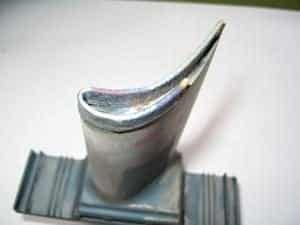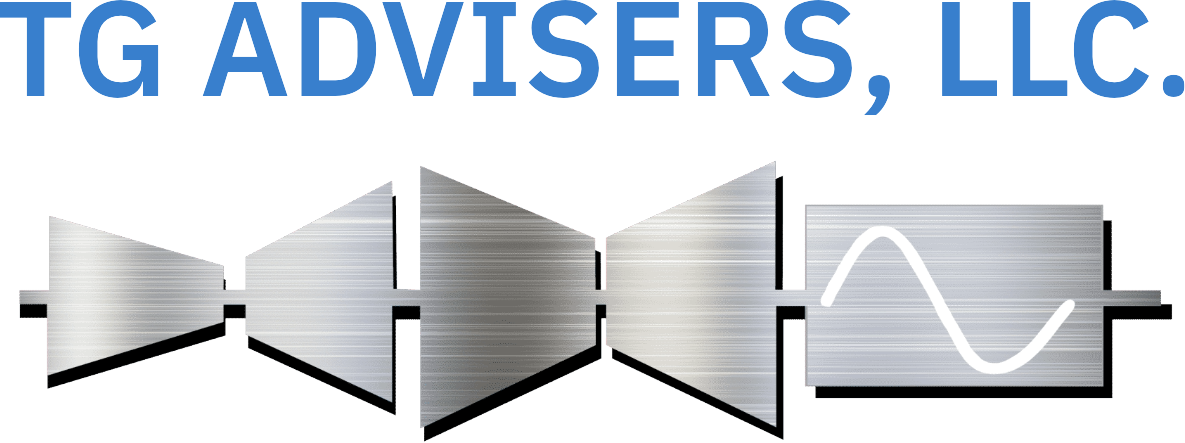Guidelines to achieve successful gas turbine part refurbishment
As published in Energy-Tech Magazine:
By Stephen R. Reid, P.E., TG Advisers Inc.
Gas turbine hot-section hardware requires part refurbishment after a specified number of operating hours, unit stop-start cycles, or a combination of the two. The repair processes required to achieve an additional interval of service present significant challenges. The variability in incoming part condition, process variation and the human element are key factors to understand and monitor in order to achieve successful part refurbishment.
Key gas turbine repair processes:
- Inspection
- Coating removal
- Joining
- Machining
- Coating application
Failure mechanisms for hot-section hardware include oxidation, creep, cracking and dimensional distortion. It is vital that incoming inspections be robust to properly define repair scope and identify unrepairable hardware from the onset.
For most hardware, it is expected that coatings will be depleted or spalled after a service interval. Traditionally, ceramic coatings are removed through an abrasive grit blast and metallic bond coats are removed through acid stripping. Common issues encountered are excessive base metal removal, inter-granular acid attack and incomplete removal.
Cracking from thermal mechanical fatigue is often present during refurbishment. This repair has become increasingly challenging with the widespread use of nickel-based superalloys across the industry. The joining processes most commonly performed for crack repair are welding and brazing. Some factors impacting the quality are joining material selection, surface cleanliness, proper process inputs and part pre-heat, and pre- and post-process heat treatments.
Material build-up and machining, such as tip or hardface repair on rotating blades, is often required during part refurbishment. With part creep and distortion it becomes increasingly difficult to achieve desired dimensional results. It is important that fixturing and machining processes are robust and have the ability to adapt to the often significant variation in part condition.
Thermal spray processes are utilized to reapply coating systems to hardware. Most hardware receives coating prior to final machining during initial manufacturing. The presence of such features as cooling holes and seal slots makes recoating more challenging than the initial application.
Part geometry, pre-heat temperature, surface cleanliness and roughness, gas and powder properties, and coating gun condition are some of the factors that influence coating quality.
Recommended guidelines to improve repair quality
The following steps are recommended to improve the quality of part refurbishment.
Get engaged
- Develop comprehensive repair specification
- Review non-conformances
- Define hold points
- Review part progress
Steps to achieving the desired repair results start well before the hardware arrives at the shop. Develop a comprehensive repair specification for your hardware that captures lessons learned from previous repair experiences and available industry knowledge. As part of the specification, agree to review points at key steps of the repair. This provides an opportunity for the hardware owner and shop personnel to discuss non-conformances or deviations from the specification. If possible, visit the shop and audit the part repair process.
Integrate important quality checks in repair
- Non-destructive testing
- Destructive testing material samples
- Coating strip – acid
- Coating application
- Flow checks and pressure checks
- Coating thickness checks
- Cooling hole blockage checks
Inspection is a vital component of repair. Integrating in-process inspections into repair helps ensure the desired end results are achieved.
On high risk or high variability processes, such as coating removal and reapplication, material samples can be processed along with the hardware. This allows for destructive analysis of the process without sacrificing a piece of valuable hardware. If additional verification is warranted, a part can be destructively evaluated.
Ensure cooling air and fuel flow systems have not been compromised. Flow, pressure and blockage checks are critical at this stage of the repair. Request and review documentation of the results of these important checks.
Post repair documentation review and visual inspection
- Work scope completed
- Dimensional inspection
- Blade moment weights
- Flow area and harmonics
- Visual inspection
After repairs are complete, review the hardware and quality documentation for discrepancies. Understand the scope of work completed and verify key dimensions are within tolerance. Audit measurement results and look for outliers in the data. Examples of important measurements are area, harmonics and the moment weight of blades. Always perform a final visual inspection of the hardware.
Going forward
Get engaged in the refurbishment of your hardware! This begins with development of the repair specification. Clearly define your quality requirements and agree to review points during the repair. Review and audit post-repair documents for non-conformances. Finally and most importantly, carefully remove the parts from the crates and visually inspect each part before use. This step is often omitted with significant consequences. Investing the appropriate time in the repair of your parts can go a long way in ensuring successful part refurbishment and the ability to achieve the maintenance intervals you desire.


